

Saint Petersburg
Photos from 2007
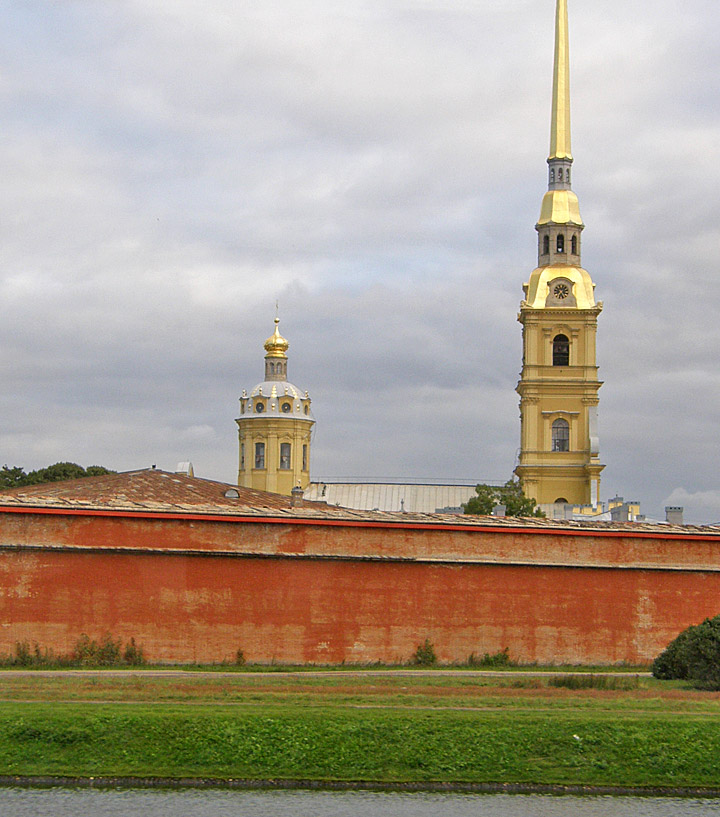
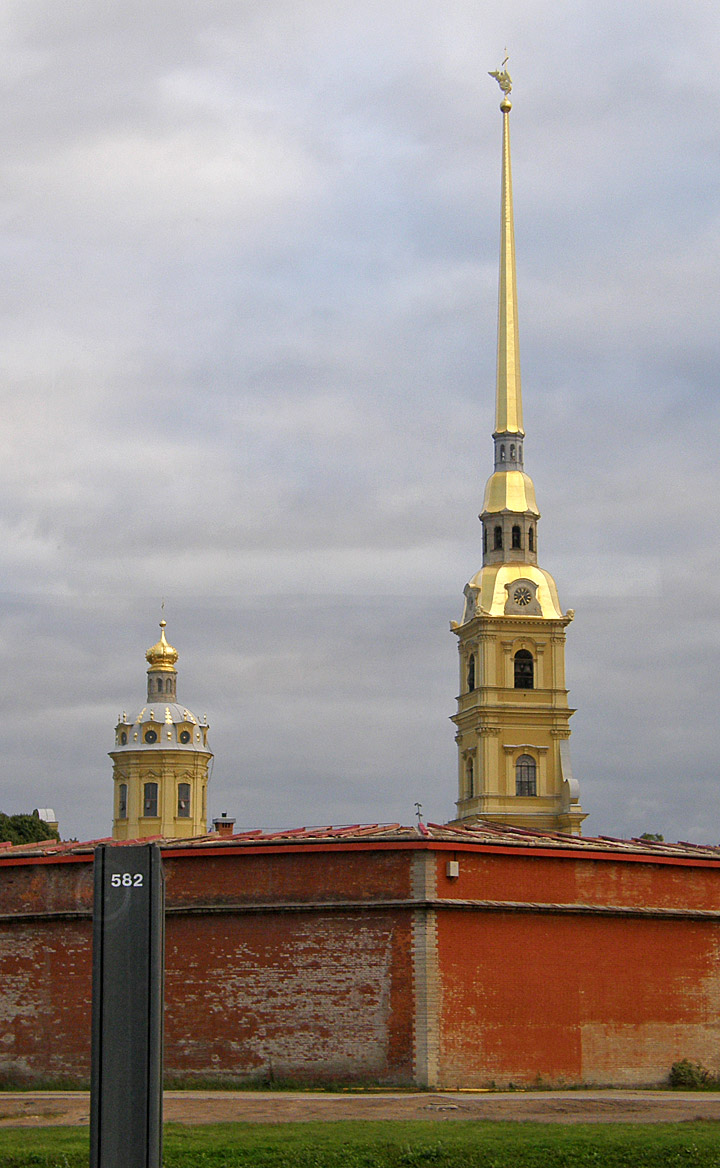
Peter and Paul Fortress
The ensemble of Peter and Paul Fortress with the Peter and Paul Cathedral takes dominant position on the right bank of the Neva river, across the Winter Palace in the center of the city. A boardwalk was built along a portion of the fortress wall, giving visitors a clear view of the city across the river to the south. On the other bank of the Neva, the spit (Strelka) of the Vasilievsky Island is graced by the former Bourse building (1805–1810), an important landmark in the style of the Greek Revival, is now home of the Museum of Navy. The spit of the Vasilievsky Island is designed as a classic lawn-park on the waterfront, and is highlighted by two tall and colorful Rostral Columns, decorated with statues and prows of battleships. This is a traditional place for music festivals and public events, such as the White Nights festival.
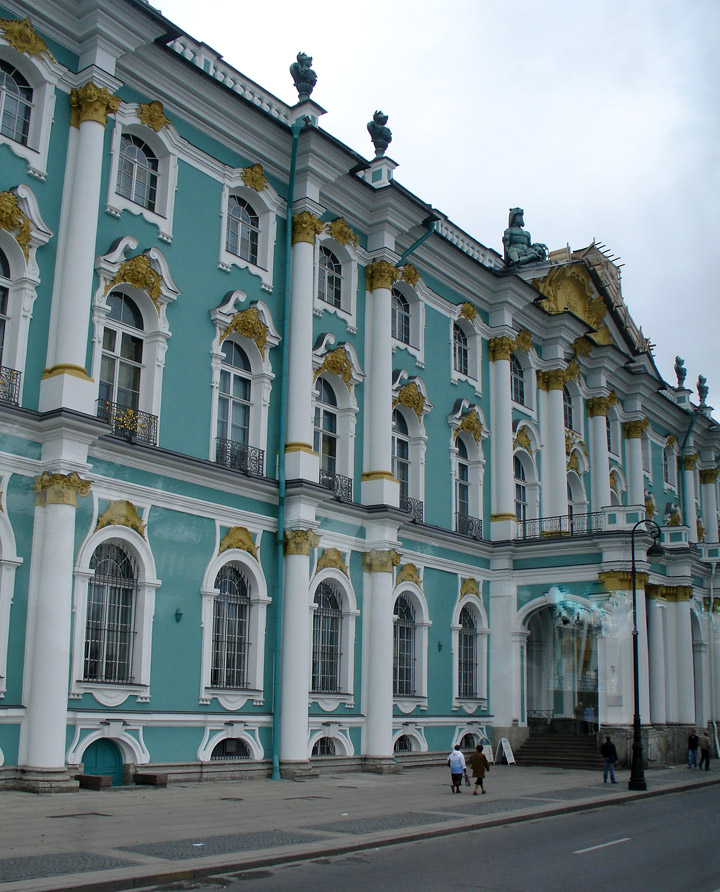
Hermitage Museum
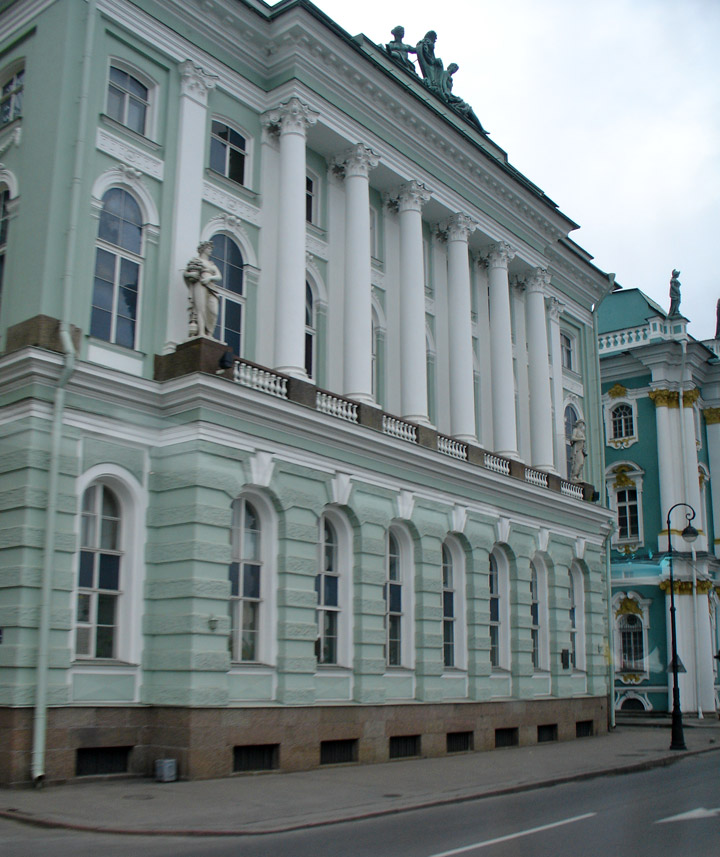
Little Hermitage
More Photos of the Hermitage Museum
The most famous of St. Petersburg's museums is the Hermitage, one of the world's largest and richest collections of Western European art. Its vast holdings were originally exhibited in the Greek Revival building (1838–1852) by Leo von Klenze, now called the New Hermitage. But the first Russian museum was established by Peter the Great in the Kunstkammer, erected in 1718–1734 on the opposite bank of the Neva River and formerly a home to the Russian Academy of Sciences. Other popular tourist destinations include the State Russian Museum and the Summer Garden, the Ethnography Museum (1900–1911), Stieglitz Museum of Applied Arts (1885–1895), the Suvorov Museum of Military History (1901–1904), and the Political History Museum (1904–06).
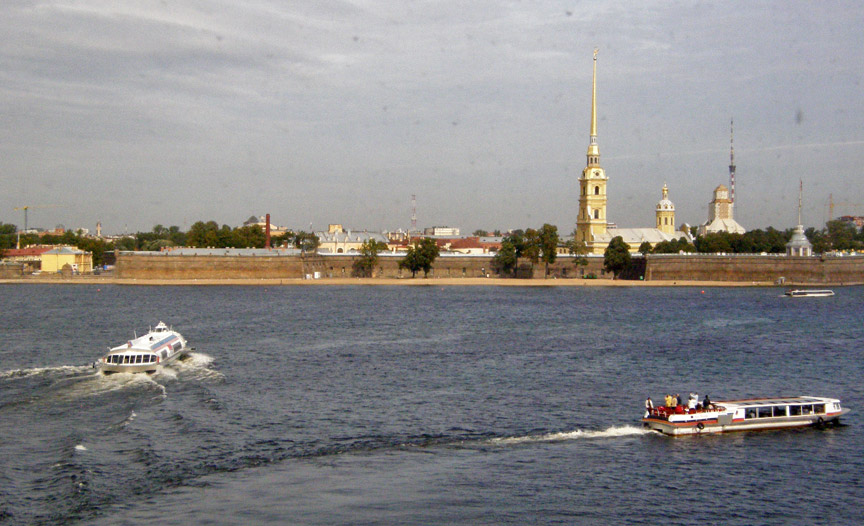
the Neva River looking toward the fortress of Peter and Paul
More Photos of Peter and Paul fortress and cathedral
The imperial government institutions were housed in stately buildings, such as the General Staff building on the Palace Square (1820–1827), with a huge triumphal arch in the centre, the Senate and Synod buildings on the Senate Square (1827–1843), the Imperial Cabinet (1803–1805) and the City Duma (1784-87) on the Nevsky Prospekt, the Assignation Bank (1783–1790), the Customs Office (1829–1832), and the masterpiece of Russian architecture: the Admiralty (1806–1823), one of the city's most conspicuous landmarks. Most of Imperial palaces and state buildings were designed by reputable architects invited by the Russian Tsar's from European capitals, such as Domenico Trezzini, Giacomo Quarenghi, Thomas de Thomon, Bartholomeo Rastrelli, Carlo Rossi and other foreign architects who settled in St. Petersburg and worked on numerous large-scale projects. Next came the generation of Russian-born architects and engineers, such as Zakharov, Stasov, Voronikhin, Starov, and other Russians who studied abroad and returned to work in St. Petersburg.
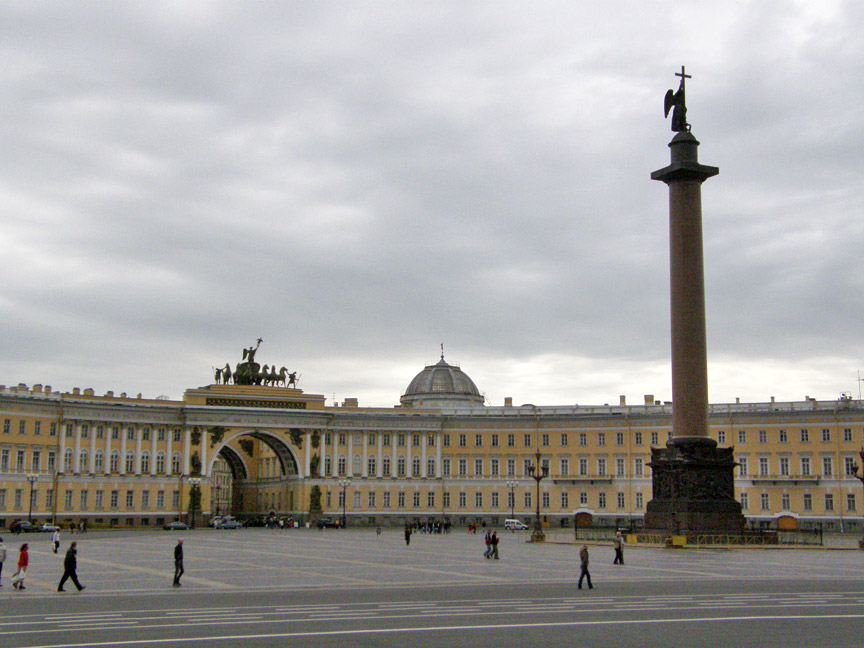
Alexander Column
in front of the
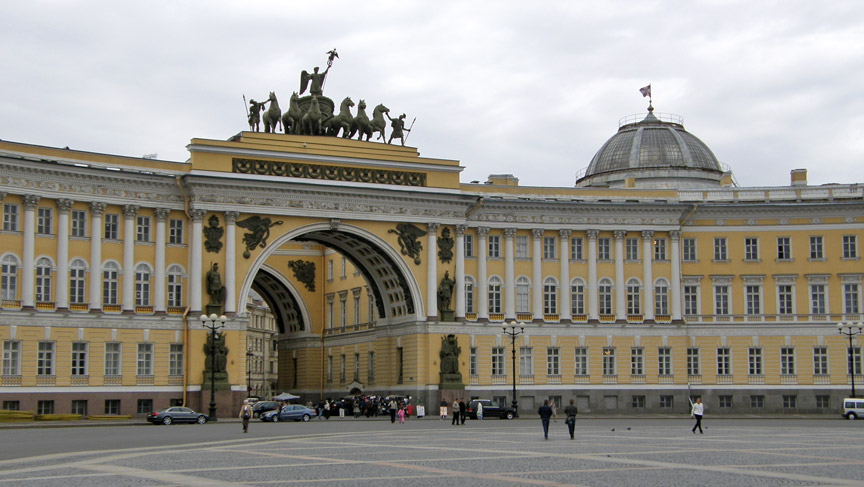
former General Staff buildings of the Russian Army (1819 - 1829)
The former imperial capital is rich in science and educational institutions. Saint Petersburg State University is based on Vasilievsky Island and in Peterhof. The university's spacious baroque edifice of Twelve Collegia (1722–1744) was designed by Domenico Trezzini. The Academy of Arts (1764–1788), an exceedingly handsome structure, overlooks a quayside adorned with genuine Egyptian griffins and sphinxes. The Smolny Institute (1806–1808), originally the first school for Russian women, was Lenin's headquarters during the Russian Revolution of 1917, is now the office of the Governor. The Catherine's Institute (1804–1807), also designed by Quarenghi, is now the Russian National Library. Another Neoclassical building by Quarenghi, a roomy Horse Guards Riding School (1804–1807), is now the Central Exhibition Hall.
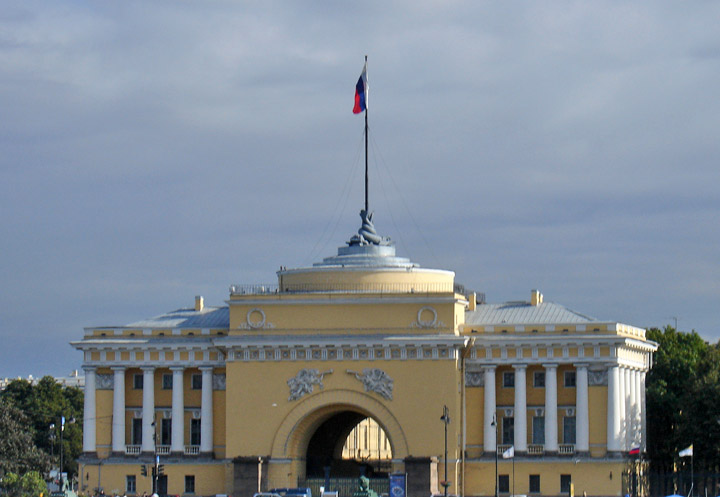
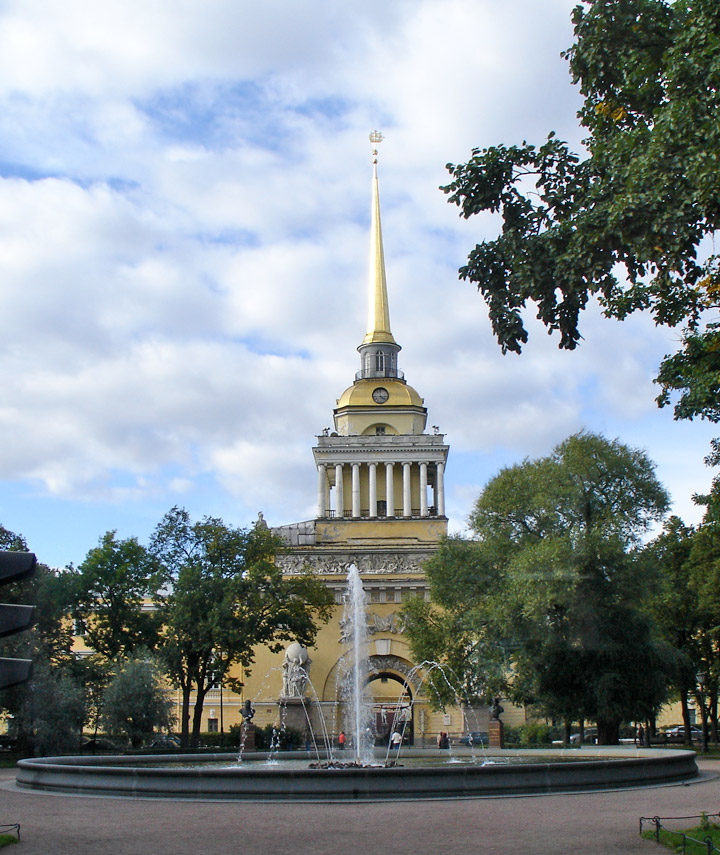
Admiralty (1806–1823)
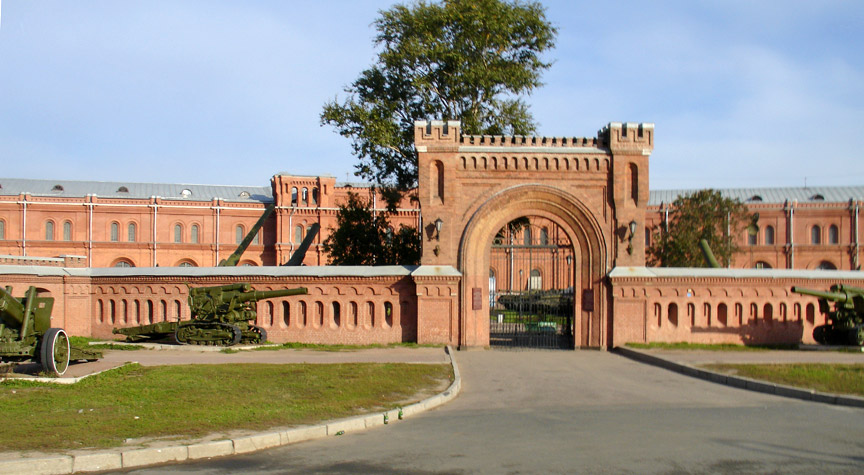
Armory
Some historic shops and storehouses are landmarks in their own right, such as the monumental New Holland Arch (1779–1787) and adjacent walls of the New Holland isle. The Merchant Court on the Nevsky Prospekt (1761–1785), also designed by Jean-Baptiste Vallin de la Mothe, houses the largest extant 18th century shopping mall and supermarket in the world, now rebuilt and updated with several coffee bars and a metro station. Nearby are the Circular Market, erected in 1785–1790, and the Passage, one of the great covered arcades of the mid-19th century.

the Aurora
During the First World War the Aurora
operated in the Baltic Sea. In 1915 her armament was changed to fourteen 152 mm
(6in) guns. At the end of 1916, the ship was moved to Saint Petersburg (then
Petrograd) for a major repair. The city was brimming with revolutionary ferment
and part of her crew joined the 1917 February Revolution. A revolutionary
committee was created on the ship (Aleksandr Belyshev was elected its captain).
Most of the crew joined the Bolsheviks, who were preparing for a Communist
revolution.
On 25 October 1917, the refusal of an order for the Aurora to take to sea
sparked the October Revolution. At 9.45 p.m. on that date, a blank shot from her
forecastle gun signaled the start of the assault on the Winter Palace, which was
to be the last episode of the October Revolution. Aurora's crew actually took
part in the attack.
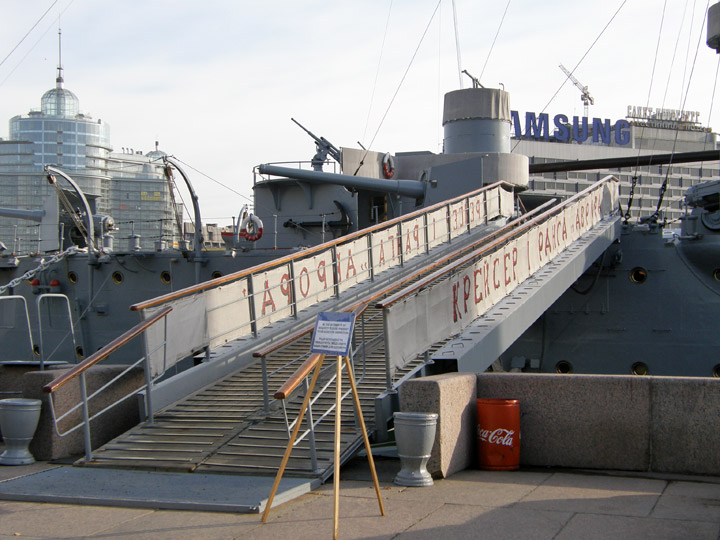
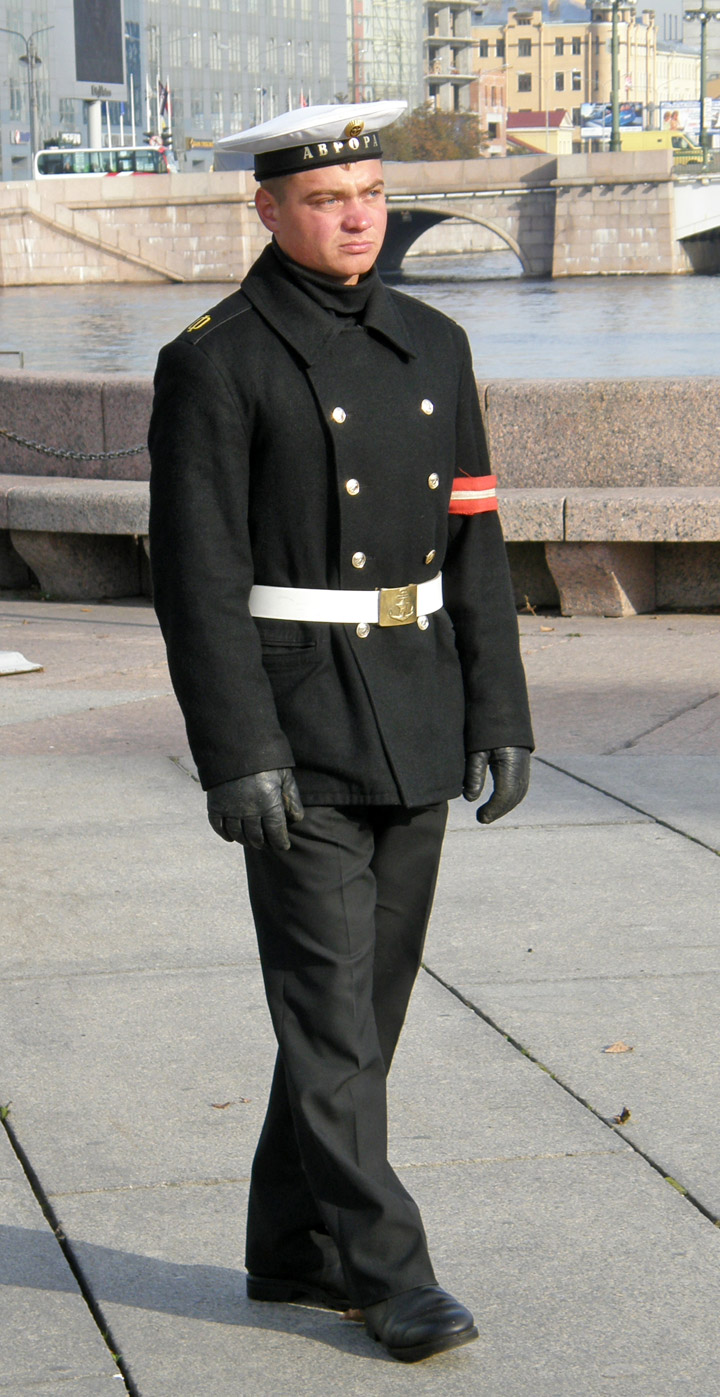
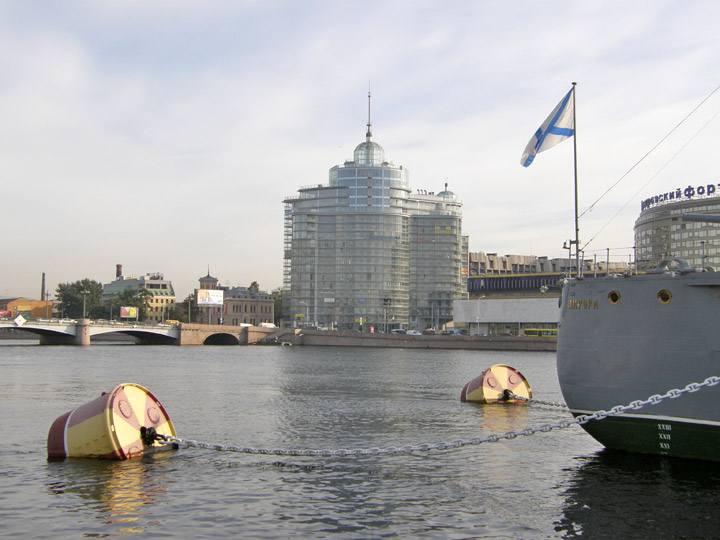
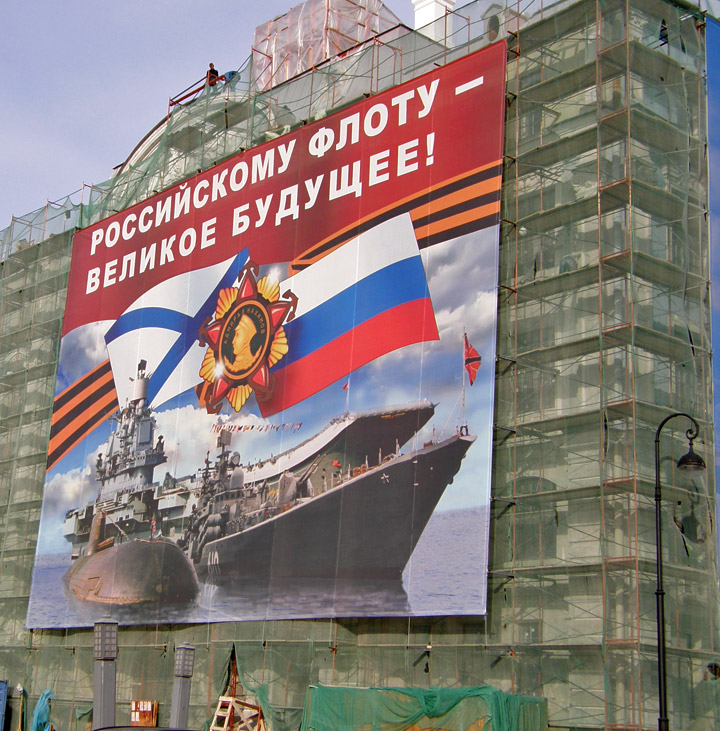
patriotic banner
Nevsky Prospekt is the main avenue of St. Petersburg connecting the Winter Palace with the ancient monastery at Alexander Nevsky Lavra. Nevsky is the busiest shopping destination and the prime center of entertainment and nighlife. Shopping malls, department stores, business centers, built in a variety of styles, include the Eliseev emporium, the House of Books, The Passage, and more.
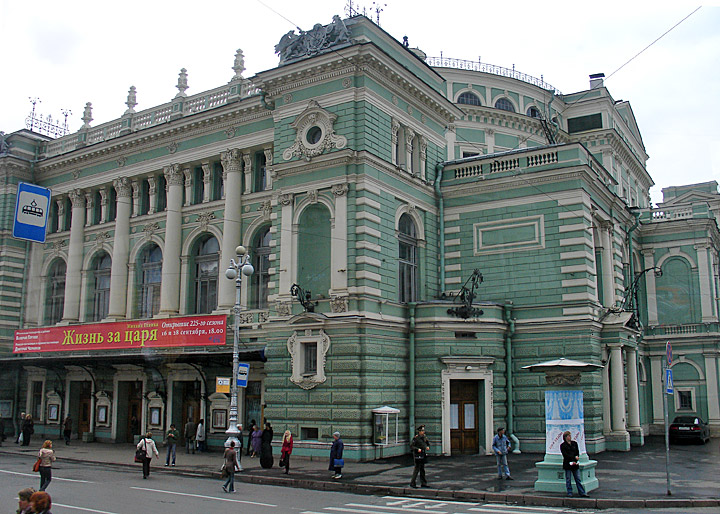
theater
St Petersburg is a home to more than 50 theatres. The oldest is the Hermitage
Theatre, a private palatial theatre of Catherine the Great, still preserving the
complex stage machinery of the 18th century. The Alexandrine Theatre, built in
1828–1832 by Carlo Rossi, was named after the wife of Nicholas I. Most famous
outside Russia is the Mariinsky Theatre (former Kirov Theatre of Opera and
Ballet), which has been styled the capital of the world ballet. The Ciniselli
Circus is one of the oldest circus buildings in the world. The Opera House at
Saint Petersburg Conservatory, the first in Russia, was founded in 1861 by Anton
Rubinstein and bears the name of Nikolai Rimsky-Korsakov; its alumni include
Tchaikovsky, Prokofiev, and Shostakovich who also taught here.
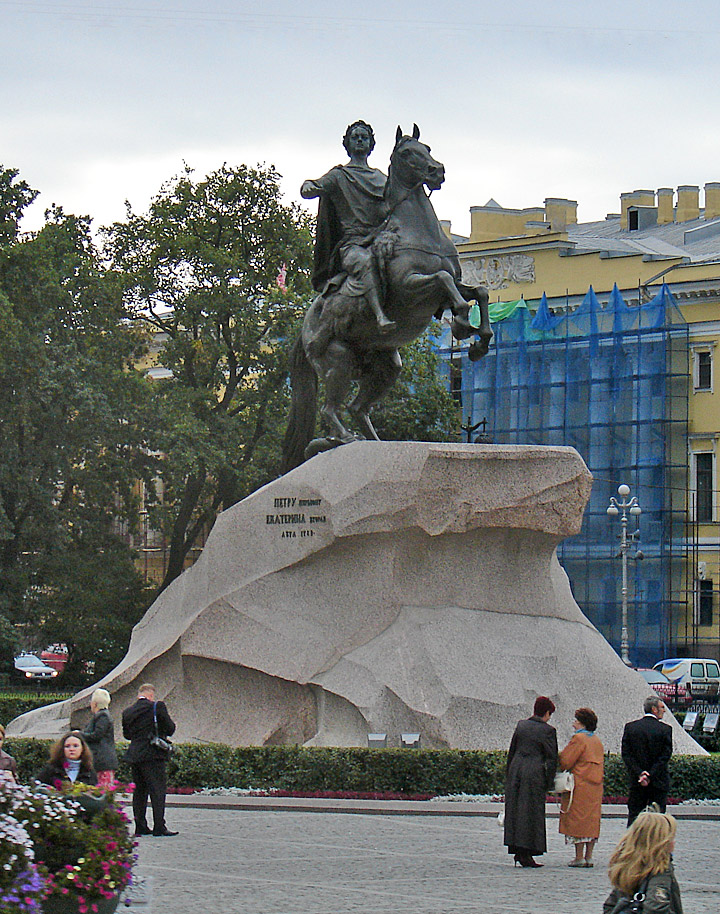
Peter the Great
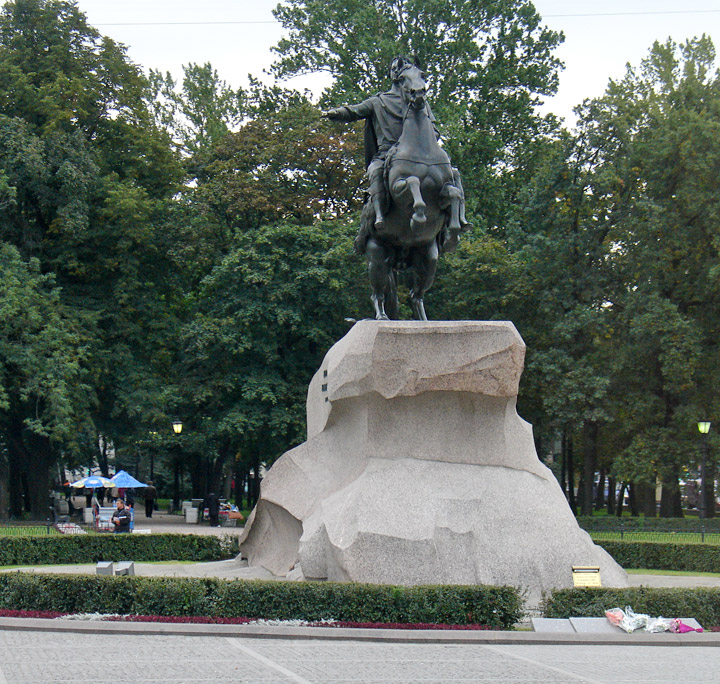
the Bronze Horseman
Probably the most familiar symbol of St Petersburg is the equestrian statue of Peter the Great, known as the Bronze Horseman and installed in 1782 on the Senate Square. Considered the greatest masterpiece of the French-born Etienne Maurice Falconet, Aleksandr Pushkin's poem about the statue figures prominently in the Russian literature under the name of The Bronze Horseman.
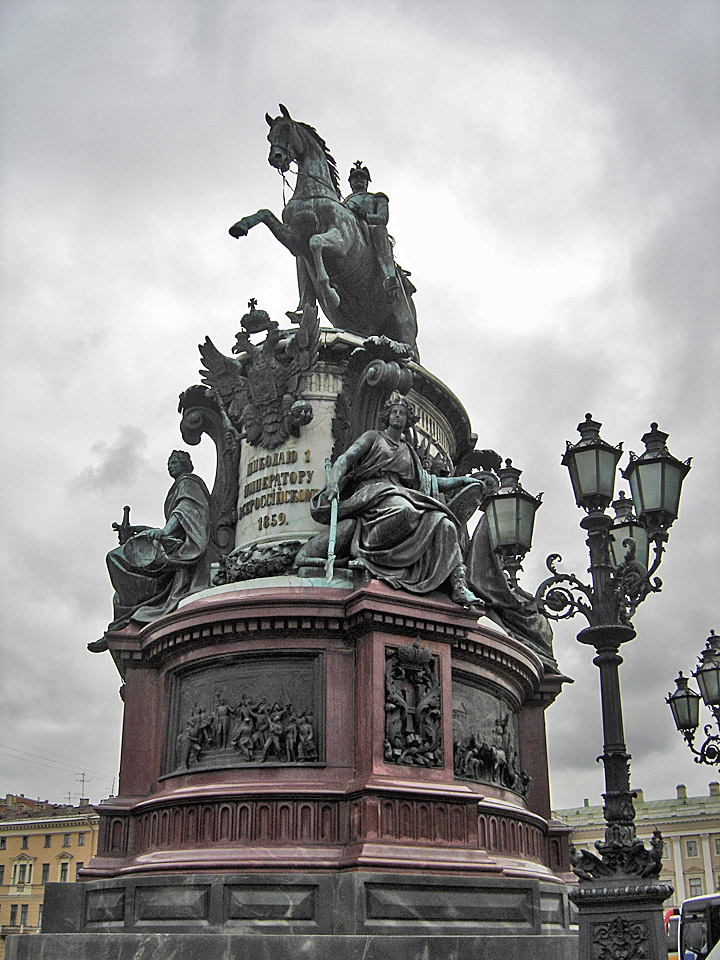
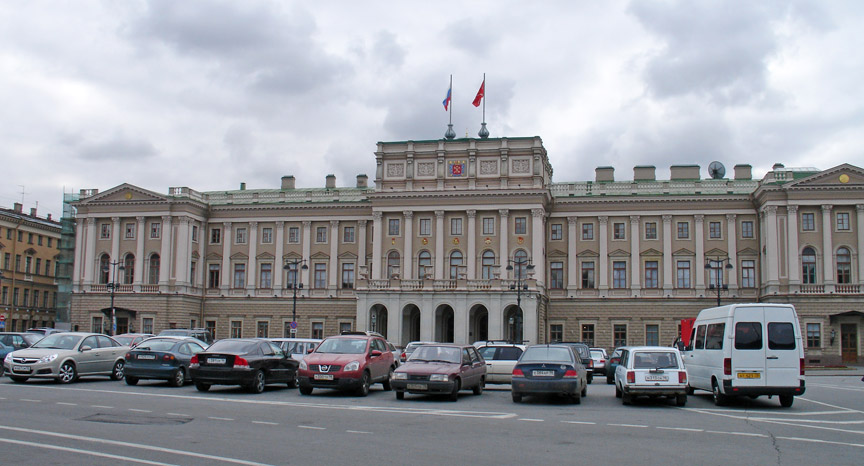
The Palace Square is dominated by the unique Alexander Column(1830–1834), the tallest of its kind in the world and so nicely set that no attachment to the base is needed. A striking monument to Generalissimo Suvorov, represented as a youthful god of war, was erected in 1801 on the Field of Mars, formerly used for military parades and popular festivities. Saint Isaac's Square is graced by the Monument to Nicholas I (1856–1859), which was spared by Bolshevik authorities from destruction as the first equestrian statue in the world with merely two support points (the rear feet of the horse).
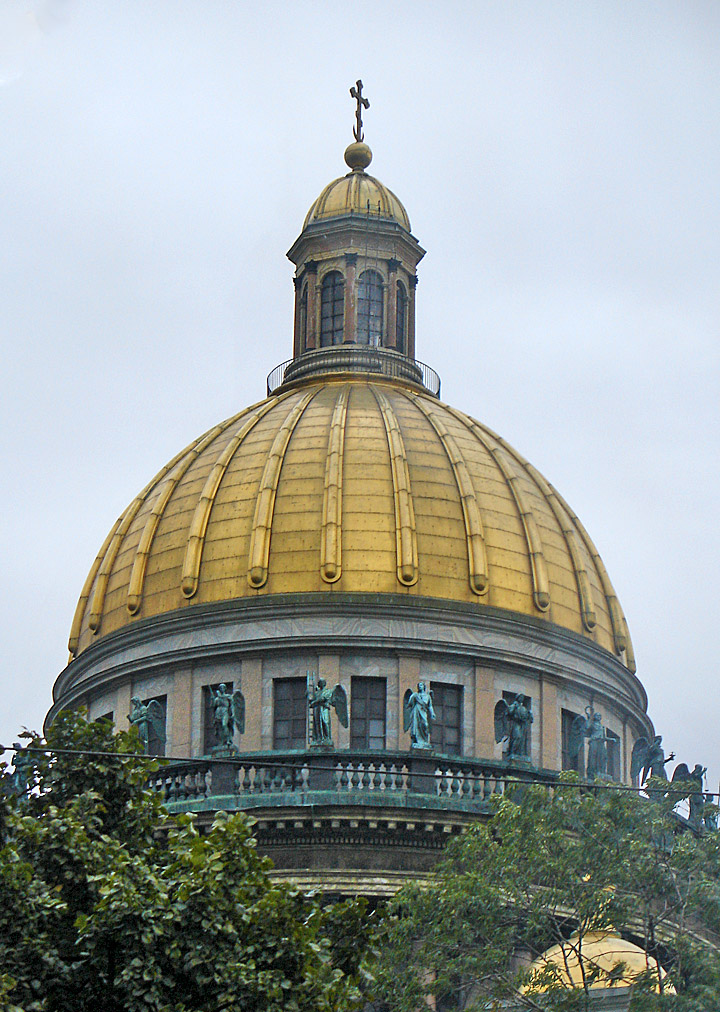
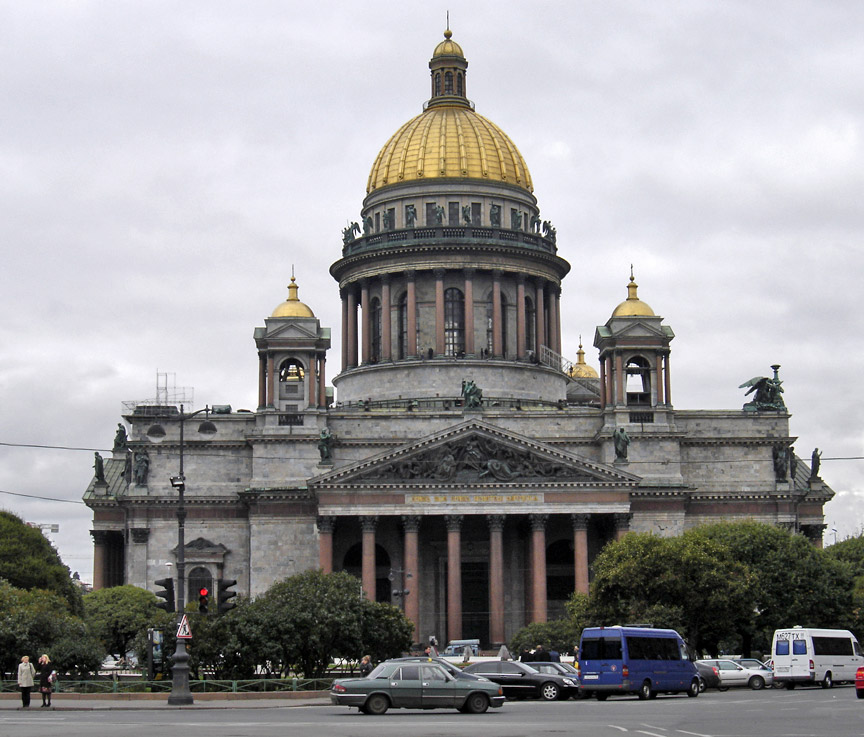
St. Issac's Cathedral

The public monuments of St Petersburg also include Mikeshin's circular statue of
Catherine II on the Nevsky Avenue, fine horse statues on the Anichkov Bridge, a
Rodin-like equestrian statue of Alexander III by Paolo Troubetzkoy, and the
Tercentenary monument presented by France in 2003 and installed on the Sennaya
Square.
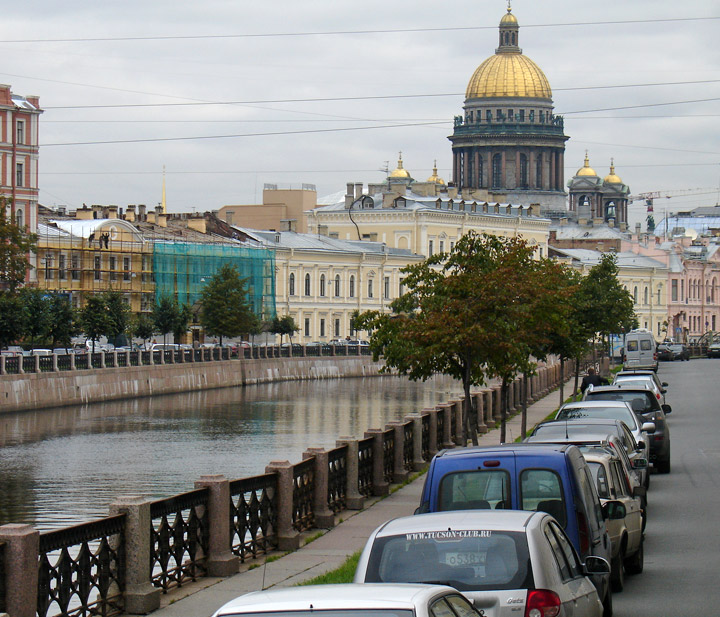
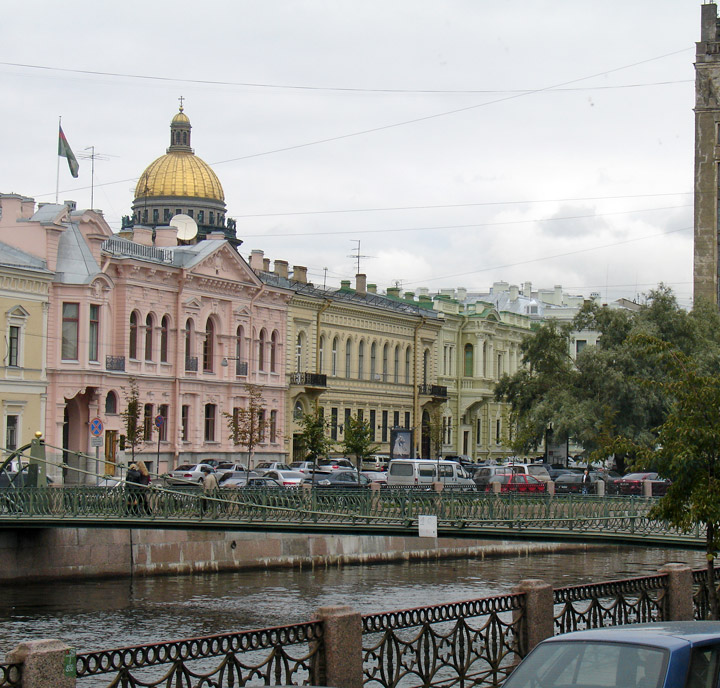
the canal
Some of the most important events in the city's history are represented by particular monuments. The Russian victory over Napoleon, for example, was commemorated by the Narva Triumphal Gate (1827–1834), and the victory in the Russo-Turkish War, 1828-1829 — by the Moscow Triumphal Gates (1834–1838). Following this tradition, the Piskarevskoye Cemetery was opened in 1960 as a monument to the victims of the 900-Day Siege.
Text from Wikipedia
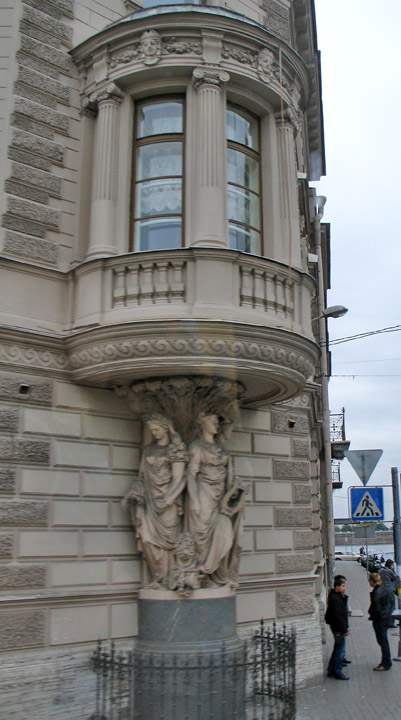
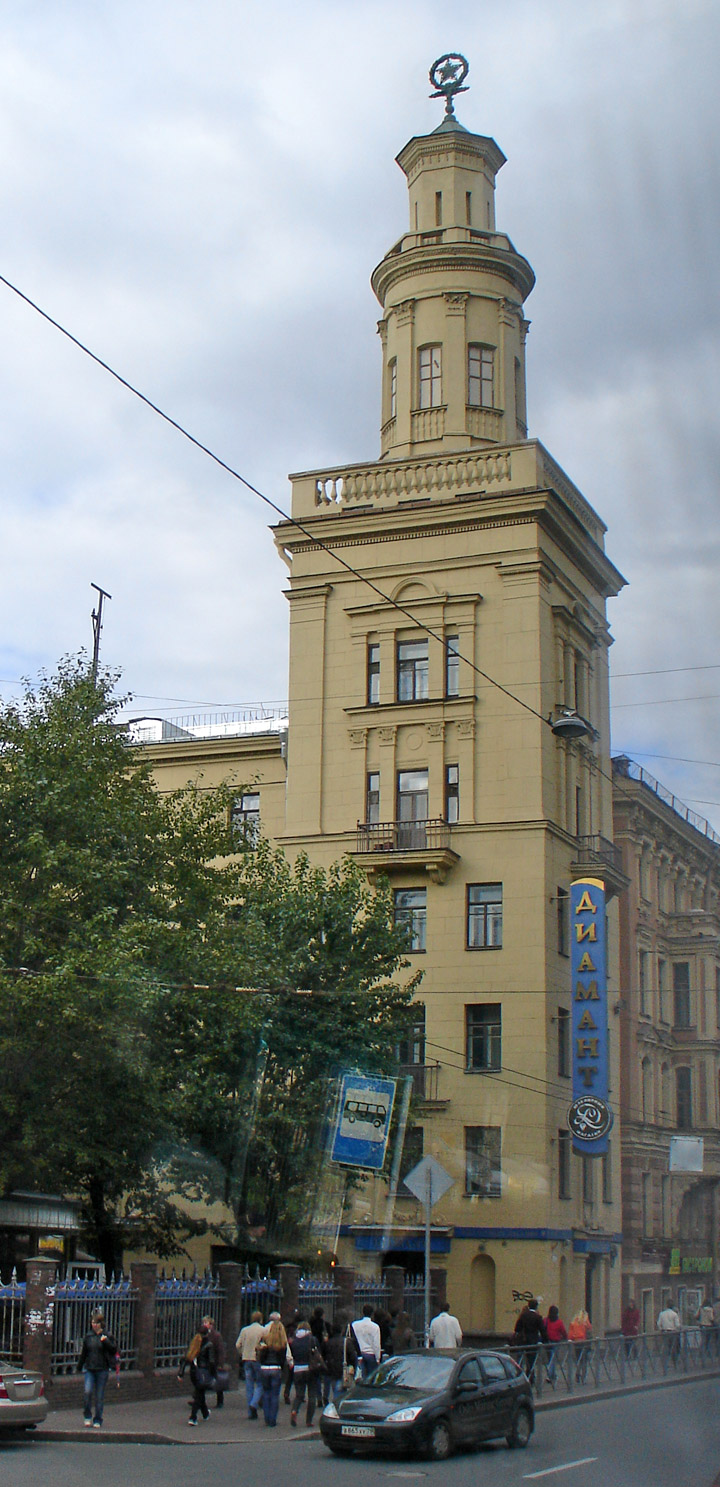
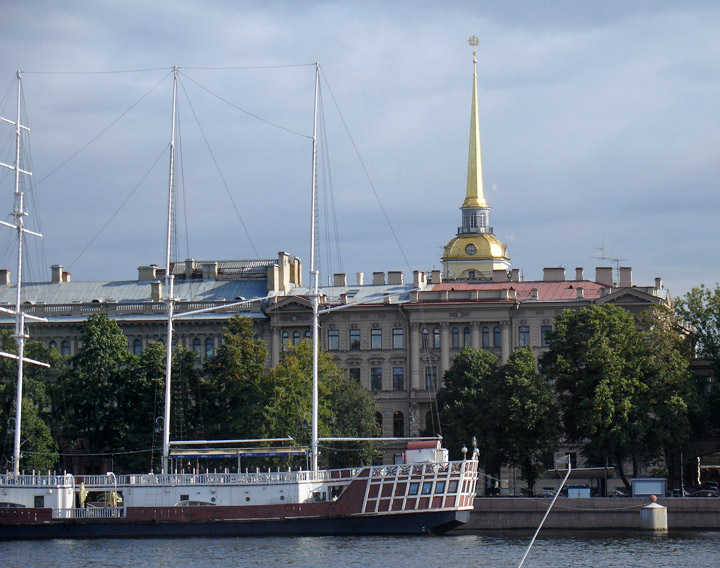

morning walk in the park
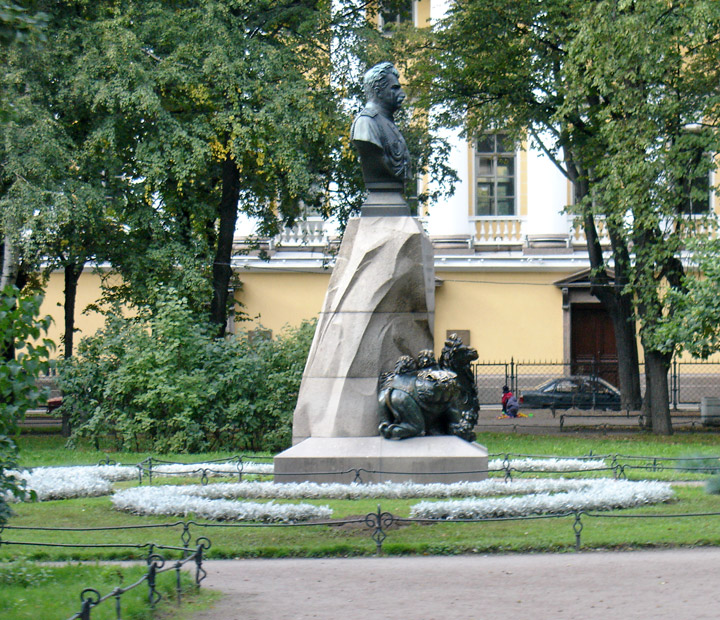
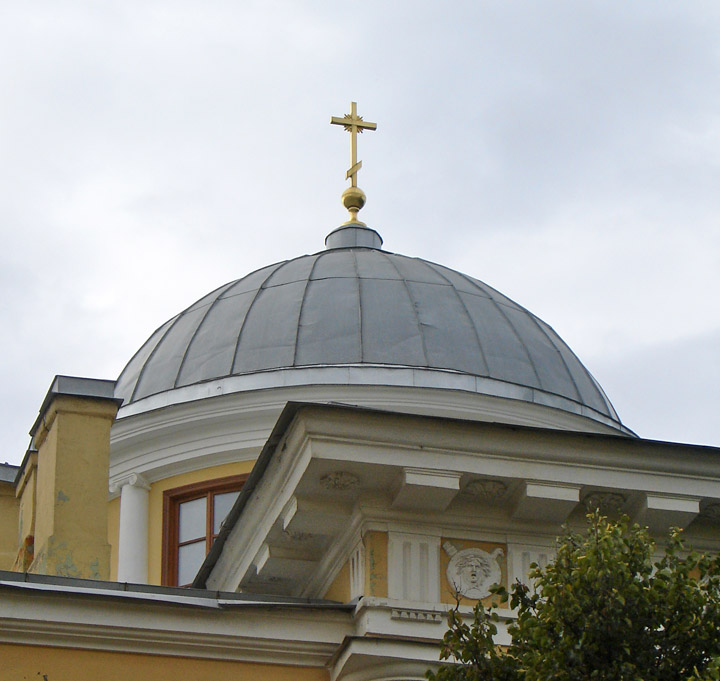
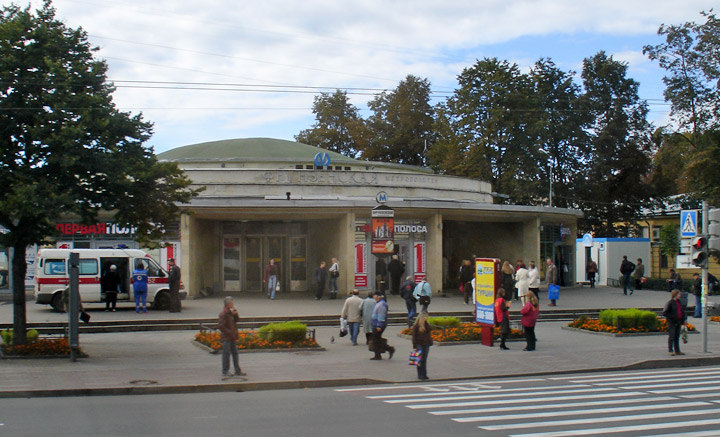
Subway entrance
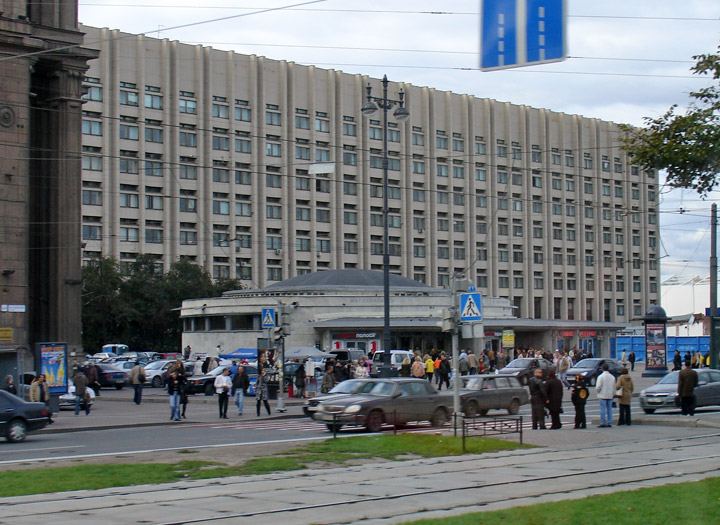
Subway
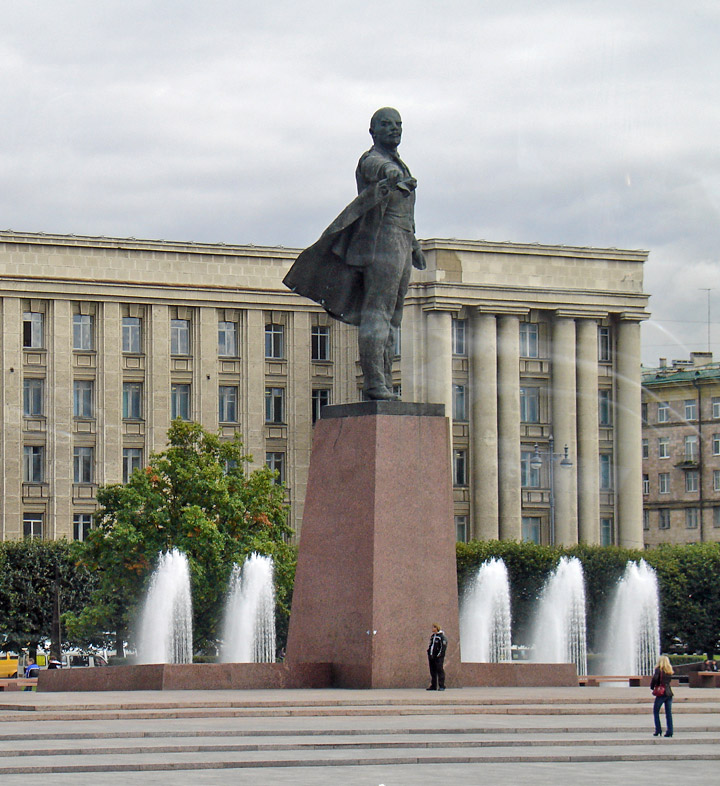
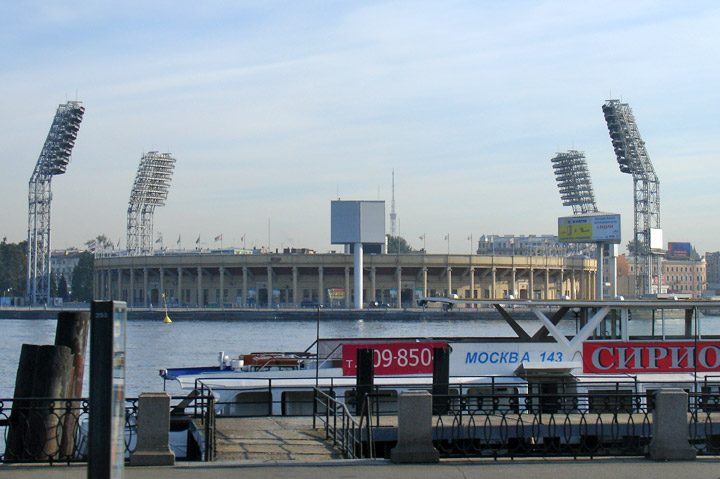
Sports stadium
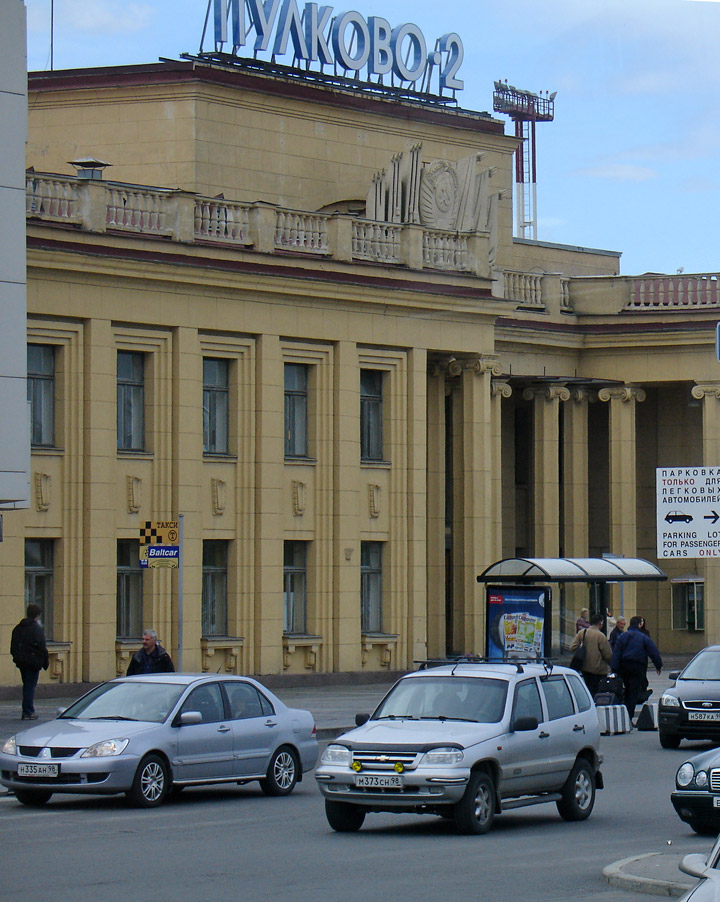
old terminal
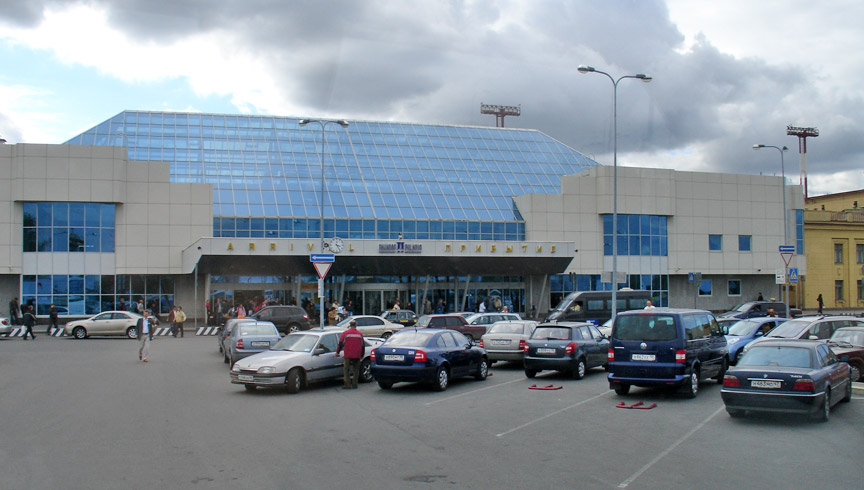
and the new terminal of the Saint Petersburg airport